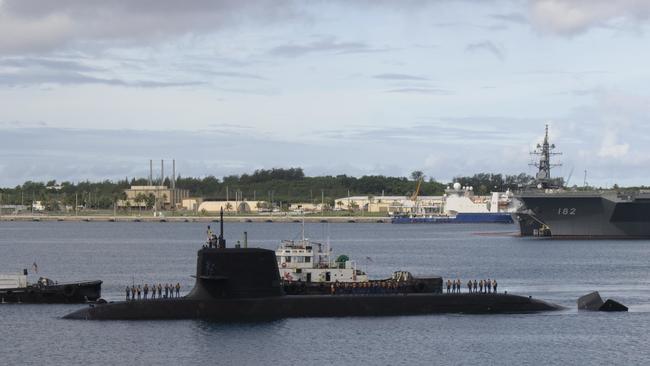Interim submarine capability desperately needed
With Australia’s Collins LOTE program under way, the RAN will have just five operational submarines, built in the 1990s.

It is estimated that by 2030, China will operate around 60 modern diesel electric and 20 nuclear-powered attack submarines, as well as a dozen huge ballistic missile-firing SSBNs. The all-nuclear USN is projected to decline slightly in numbers and will have 55 fast-attack submarines by that date. Japan and South Korea will each have fleets of slightly more than 20 conventional submarines, numbers similar to India and Russia.
With Australia’s Collins LOTE program under way by then – with each submarine in dock for a minimum of two years – the RAN will have just five operational submarines, built in the 1990s.
The situation is actually far worse than that because when factors such as routine maintenance, training, possible mishaps and slow transit times are taken into account, we would most likely only be able to count on one or two boats being available for combat operations. This should not only be a matter of deep national shame but also a huge concern for strategic planners. On top of that, no one can see a clear pathway to the RAN being able to acquire nuclear-powered submarines – with the only realistic option being the Virginia class – until the 2040s.
The situation is crying out for more conventional submarines – and fast. What is standing in the way is lack of political will and a RAN hierarchy that shows no sense of urgency, despite Australia’s rapidly deteriorating strategic circumstances – as the China-Solomon Islands secret security pact is demonstrating.
Our navy unconvincingly argues that it is just too difficult to introduce new classes of submarines into service – overlooking the fact that all of the regional powers listed above simultaneously operate at least three different classes without any apparent difficulty.
Australia should have started serious work on replacing the Collins class in 2010 but in more than a decade we have made no progress due to a series of missteps and changes of direction – the most visible being the cancellation of the Attack-class program last year without a viable short term replacement strategy.
Given the urgency of the situation, whoever forms the next government should immediately begin discussions with Saab-Kockums about having a submarine in the water by end of the decade. The company has 600 Australian employees, is the designer of Collins and also the next-generation Swedish A26 class.
The amount of time it takes to build a submarine is based on several factors – especially the variety of missions it needs to perform and subsequent design complexity. The hull itself is just a large metal pressure vessel not unlike many that are found in the offshore oil and gas industry.
The contract for the construction of Collins – by the standards of the day an extremely complex submarine – was awarded in 1987 and the first of class was launched in 1993.
With the right industrial base, a sense of urgency, suitable funding and highest priority being given to anti-surface and anti-submarine warfare missions, there is no reason why a new Australian class could not be in the water at the end of the decade.
However, Defence would have to ditch its current sclerotic, process-heavy procurement arrangements and instead come up with a dynamic acquisition team wanting to move quickly rather than continually argue why things cannot be done.
The Netherlands is also looking for a large, conventionally powered oceanic submarine to replace the current Walrus class that are the same size and vintage as Collins. That program has also been delayed for reasons of process, but a decision on the successful design should be taken next year – and it is anticipated that the first of class will be launched in 2029.
Japan and South Korea are also able to design and launch new classes in less than 10 years – but they both have the advantage of continuous submarine building programs.
Even Taiwan – with an economy and population smaller than Australia’s and with no previous submarine construction experience – started serious work on their highly secret conventional submarine program in 2018. They expect to launch the first of eight new boats within the next two years – a breathtaking accomplishment by Australian standards.
What all of these countries have is a sense of urgency and a lack of political interference and State parochialism. The opposite is the case here.


